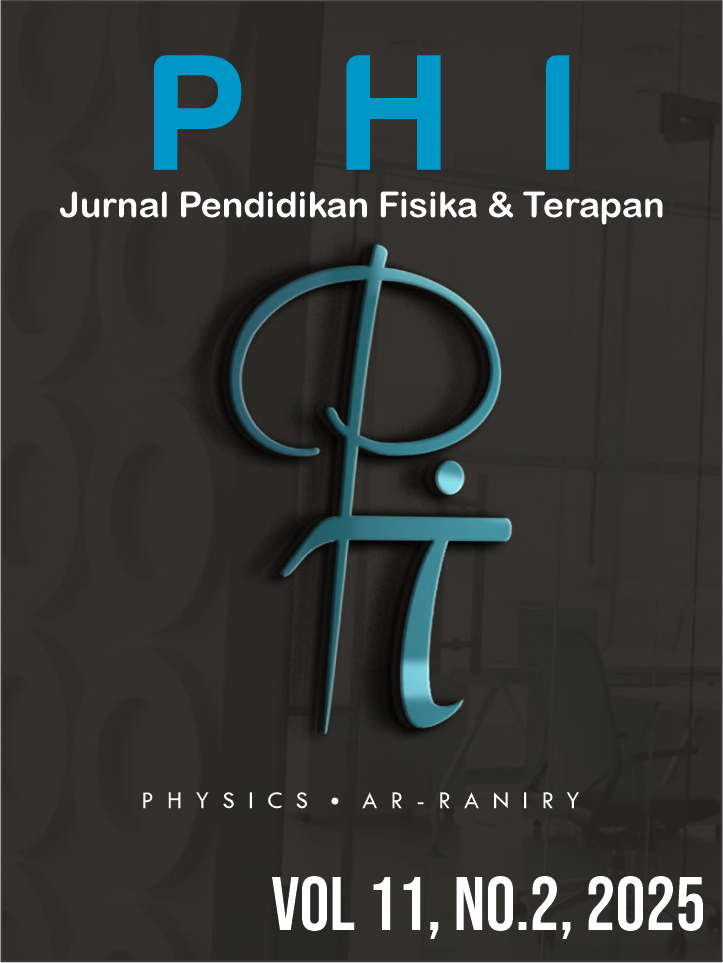High-Accuracy Pneumonia Classification via Ensemble Learning on Chest X-ray Imagery
DOI:
https://doi.org/10.22373/0y63tg53Keywords:
Pneumonia, Chest X-Ray, Image Classification, HOG, LBP, Ensemble LearningAbstract
Pneumonia continues to pose a substantial global health threat, necessitating rapid and precise diagnostic tools. The conventional manual assessment of Chest X-ray (CXR) images is time-intensive and susceptible to human error. This study introduces an automated machine learning approach that employs an ensemble learning strategy to achieve highly accurate pneumonia classification from CXR images. The comprehensive system operates through three primary phases: initial image pre-processing (involving grayscale conversion, resizing, and filtering for enhanced quality), robust feature extraction (utilizing the fusion of Histogram of Oriented Gradients (HOG) and Local Binary Pattern (LBP) descriptors), and sophisticated model training and classification. An ensemble model is trained, integrating the predictive power of Random Forest, Logistic Regression, and Extreme Gradient Boosting classifiers. Experimental validations, performed on a dedicated dataset comprising pneumonia and normal CXR images, unequivocally demonstrate that the proposed strategy achieves an impressive 97.50% overall classification accuracy, strongly supported by precision, recall, and F1-scores all at 97.50%. This superior performance, notably surpassing individual machine learning algorithms, underscores the profound efficacy of ensemble learning in delivering reliable and precise predictions for pneumonia diagnosis. Consequently, this automated methodology presents a valuable asset for medical professionals, aiding in the swift and accurate identification of pneumonia.References
Alqaduh, H., Alsleti, M., Alsharif, R., Qasmieh, I. A., & Alqudah, A. M. (2021). Employing texture features of chest x-ray images and machine learning in covid-19 detection and classification. Mendel, 27, 9–17. https://doi.org/10.13164/mendel.2021.1.009
Batista, A. F. de Moraes, Miraglia, J. L., Donato, T. H. R., & Filho, A. D. P. C. (2020). COVID-19 diagnosis prediction in emergency care patients: a machine learning approach. MedRxiv. https://doi.org/10.1101/2020.04.04.20052092
Johri, S., Goyal, M., Jain, S., Baranwal, M., Kumar, V., & Upadhyay, R. (2021). A novel machine learning-based analytical framework for automatic detection of COVID-19 using chest X-ray images. International Journal of Imaging Systems and Technology, 31(3), 1105–1119. https://doi.org/10.1002/ima.22613
Khan, N., Ullah, F., Hassan, M. A., Hussain, A., et al. (2020). COVID-19 classification based on Chest X-Ray images using machine learning techniques. Journal of Computer Science and Technology Studies, 2, 01–11.
Khuzani, A. Z., Heidari, M., & Shariati, S. A. (2021). COVID-Classifier: An automated machine learning model to assist in the diagnosis of COVID-19 infection in chest x-ray images. Scientific Reports, 11(1), 9887. https://doi.org/10.1038/s41598-021-88807-2
Mary, L. W., & Raj, S. A. A. (2021). Machine learning algorithms for predicting SARS-CoV-2 (COVID-19)-A comparative analysis. 2021 2nd International Conference on Smart Electronics and Communication (ICOSEC), IEEE, pp. 1607–1611. https://doi.org/10.1109/ICOSEC51865.2021.9591801
Mijwil, M. M. (2021). Implementation of machine learning techniques for the classification of lung X-Ray images used to detect COVID-19 in humans. Iraqi Journal of Science, 62(6), 2099–2109. https://doi.org/10.24996/ijs.2021.62.6.35
Ohata, S. S. Y., & Jadhav, S. M. (2019). Deep convolutional neural network based medical image classification for disease diagnosis. Journal of Big Data, 6(1), 1–18. https://doi.org/10.1186/440537-019-0276-2
Pedregosa, F., Varoquaux, G., Gramfort, A., Michel, V., Thirion, B., Grisel, O., Blondel, M., Prettenhofer, P., Weiss, R., & Dubourg, V. (2011). Scikit-learn: Machine learning in Python. Journal of Machine Learning Research, 12, 2825–2830. (Note: This is a foundational reference for the ML algorithms' implementation)
Rachmadany Rachman, R., Dewang, S., Ilyas, S. D. A., & Juarlin, E. (2024). Identification and classification of SARS-CoV-2 on chest CT-scan image using GLCM-based feature extraction with K-NN and naïve bayes methods. AIP Conf. Proc. 2774, 050011. https://doi.org/10.1063/5.0171488
Rachmadany Rachman, R. (2022). Identifikasi dan Klasifikasi Covid-19 pada Citra Chest CT-Scan Menggunakan Ekstraksi Fitur Berbasis GLCM dengan Metode K-NN dan Naïve Bayes (Tesis Magister yang Tidak Dipublikasikan). Universitas Hasanuddin.
Rasheed, J., Hameed, A. A., Djeddi, C., Jamil, A., & Al-Turjman, F. (2021). A machine learning-based framework for diagnosis of COVID-19 from chest X-ray images. Interdisciplinary Sciences: Computational Life Sciences, 13, 103–117. https://doi.org/10.1007/s12539-020-00403-6
Saygılı, A. (2021). A new approach for computer-aided detection of coronavirus (COVID-19) from CT and X-ray images using machine learning methods. Applied Soft Computing, 105, 107323. https://doi.org/10.1016/j.asoc.2021.107323
Yadav, M., Perumal, M., & Srinivas, M. (2020). Analysis on novel coronavirus (COVID-19) using machine learning methods. Chaos, Solitons & Fractals, 139, 110050. https://doi.org/10.1016/j.chaos.2020.110050
Downloads
Published
Issue
Section
License
Copyright (c) 2025 Rezky Rachmadany Rachman

This work is licensed under a Creative Commons Attribution-NonCommercial 4.0 International License.
Authors who publish with Jurnal Phi agree to the following terms:
- Authors retain copyright and grant the journal right of first publication with the work simultaneously licensed under a Creative Commons Attribution License (CC BY 4.0) that allows others to share the work with an acknowledgment of the work's authorship and initial publication in this journal.
- Authors are able to enter into separate, additional contractual arrangements for the non-exclusive distribution of the journal's published version of the work (e.g., post it to an institutional repository or publish it in a book), with an acknowledgment of its initial publication in this journal.
- Authors are permitted and encouraged to post their work online (e.g., in institutional repositories or on their website) prior to and during the submission process, as it can lead to productive exchanges, as well as earlier and greater citation of published work (See The Effect of Open Access).

















